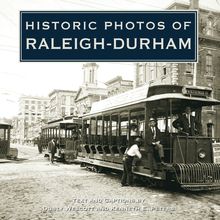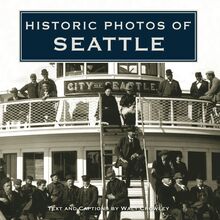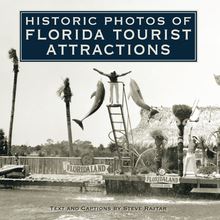Historic Photos of Louisville , livre ebook
204
pages
English
Ebooks
2006
Vous pourrez modifier la taille du texte de cet ouvrage
Obtenez un accès à la bibliothèque pour le consulter en ligne En savoir plus
Découvre YouScribe en t'inscrivant gratuitement
Découvre YouScribe en t'inscrivant gratuitement
204
pages
English
Ebooks
2006
Vous pourrez modifier la taille du texte de cet ouvrage
Obtenez un accès à la bibliothèque pour le consulter en ligne En savoir plus
Publié par
Date de parution
01 septembre 2006
Nombre de lectures
2
EAN13
9781618586506
Langue
English
Poids de l'ouvrage
14 Mo
Founded in 1778 by George Rogers Clark at the falls of the Ohio River, the city of Louisville emerged quickly as a center for river commerce. Through the Civil War, the early twentieth century, two world wars, and into the modern era, Louisville has continued to shine as a great American city steeped in history.
Historic Photos of Louisville captures the journey of Kentucky’s largest city through hundreds of historic photographs culled from the finest archives in local, national, and private collections. Handsomely bound in one volume and showcased in vivid black-and-white are images of the best-known and many lesser-known landmarks and key moments from the city’s past.
Join writer James Anderson in this nostalgic look back at penny farthings and the Dixie Flyer automobile, mule-drawn trolleys and the L&N Railroad, bourbon whiskey, the Louisville Slugger, the Flood of 1937, the Sennings European Hotel, the grand Rialto Theater, and of course Churchill Downs, among a potpourri of other fascinating subjects.
Publié par
Date de parution
01 septembre 2006
Nombre de lectures
2
EAN13
9781618586506
Langue
English
Poids de l'ouvrage
14 Mo
HISTORIC PHOTOS OF
LOUISVILLE
T EXT AND C APTIONS BY J AMES C. A NDERSON
View of the Louisville skyline northwest from atop the Cumberland Apartments at Second and York Streets, 1930
HISTORIC PHOTOS OF
LOUISVILLE
Turner Publishing Company
200 4th Avenue North Suite 950
Nashville, Tennessee 37219
(615) 255-2665
www.turnerpublishing.com
Historic Photos of Louisville
Copyright 2006 Turner Publishing Company
All rights reserved.
This book or any part thereof may not be reproduced or transmitted in any form or by any means, electronic or mechanical, including photocopying, recording, or by any information storage and retrieval system, without permission in writing from the publisher.
Library of Congress Control Number: 2006905292
ISBN: 1-59652-277-1
ISBN 13: 978-1-59652-2770
Printed in China
09 10 11 12 13 14 15 16-0 9 8 7 6 5 4
C ONTENTS
A CKNOWLEDGMENTS
P REFACE
F ROM C IVIL W AR TO THE C ENTENNIAL (1860-1899)
B EGINNING A N EW C ENTURY (1900-1919)
B ETWEEN THE W ORLD W ARS (1920-1939)
F ROM B OOM TO F EAR OF B UST (1940-1970)
N OTES ON THE P HOTOGRAPHS
Louisville Gas Electric Company generating station and the intersection of Second and Main streets in 1930, as seen from the George Rogers Clark Memorial Bridge.
A CKNOWLEDGMENTS
This volume, Historic Photos of Louisville , is the result of the cooperation and efforts of many individuals and organizations. It is with great thanks that we acknowledge the valuable contributions of the following for their generous support.
Stockyards Bank Trust
U.S. Bank
Norton Healthcare
Wyatt, Tarrant Combs
The majority of the photographs in this volume were selected from the 1.5 million items housed at the Special Collections Department at the Ekstrom Library, University of Louisville. We would like to recognize the assistance and support of the Archives staff: Delinda Buie, Bill Carner, Ann Collins, James Manasco, George McWhorter, Suzy Palmer, and Amy Purcell. Student assistant Chrissie Leake also provided valuable help with the scanning of the photographs.
Finally, we would like to offer thanks to Donna Neary for her advice and for proofreading the manuscript.
P REFACE
Since the beginning of American photography in the 1840s, billions of images have been produced. The survival of these images, however, has largely been left to chance, with little official recognition given to the rich visual history represented in this prodigious, though for the most part haphazard, production. Until the last quarter of the twentieth century, archivists, including many in Kentucky, did not consider photographs to be items worth collecting. In addition, the natural enemies of photographs-floods, fires, dirt, insects, and neglect-took a tremendous toll.
Louisville narrowly escaped the total destruction of the first one hundred years of its photographic history during the great Ohio River flood of 1937. Remaining at or above flood stage for several days, the river put floodwater into the basements and first floors of 60 percent of the city. Unfortunately, all of the city s photographic studios, many with collections going back to the middle of the nineteenth century, were located within a few blocks of the riverfront. The Caufield Shook Studio, Louisville s largest, lost nearly thirty thousand negatives stored in the basement of its building at 638 S. Fourth Street. Of the 36 photographic studios active in Louisville in 1938, 23 were nearer the river than Caufield Shook.
Many studio collections were a complete loss, but 1937 made clear the threat posed by a river which had flooded the downtown at least once a decade for more than a century. It caused two of the studios, Caufield Shook and the Royal Photo Company, to exercise great diligence in protecting what remained of their negatives. Those negatives today constitute two of the biggest segments of the holdings of the University of Louisville s Photographic Archives.
Founded in 1968 to collect and preserve the visual history of the city, the Photographic Archives collections have grown to approximately 1.5 million photographs, making it one of the most important collections in the nation. Its collections have a national and international reputation and have drawn scholars representing many fields of research. It attempts to meet the research needs of a wide range of academic disciplines as well as their reproduction needs. Photographs from the collections frequently appear in books, journals, and documentary films in addition to student theses and dissertations.
The power of photographs is that they are less subjective than words in their treatment of history. Although the photographer can make subjective decisions regarding subject matter and how to capture and present it, photographs seldom interpret the past to the extent textual histories can. For this reason, photography is uniquely positioned to offer an original, untainted look at the past, allowing the viewer to learn for himself what the world was like a century or more ago.
The goal in publishing this work is to provide broader access to a set of extraordinary photographs that seek to inspire, provide perspective, and evoke insight that might assist people who are responsible for determining Louisville s future. In addition, the book seeks to preserve the past with adequate respect and reverence.
The photographs selected have been reproduced in dramatic black-and-white tones to provide depth to the images. With the exception of touching up imperfections that have accrued with the passage of time and cropping where necessary, no changes have been made. The focus and clarity of many images is limited to the technology and the ability of the photographer at the time they were taken.
The early twentieth century assumption that photographs were insignificant ephemera, unworthy of inclusion in collections of historical research materials, has been proven false by institutions such as the University of Louisville Photographic Archives and others of its kind. The value of these images of an earlier era will continue to be recognized, and institutions like the Photographic Archives will continue to play an important role in preserving them and making them available to scholars and the public.
- James C. Andy Anderson
Horse and buggy under the Louisville and Jeffersonville Bridge, 1891
F ROM C IVIL W AR TO THE C ENTENNIAL
(1860-1899)
The Falls of the Ohio at Louisville is the only natural impediment to river navigation between Pittsburgh, Pennsylvania, and Cairo, Illinois. Prior to 1830, goods and passengers were portaged around the falls, requiring all river travelers to stop at Louisville. With the opening of a canal around the falls in 1830, river traffic thrived and so did the city. Businesses related to the transport of goods-forwarding agents, commission merchants, wholesalers, insurers, and warehouses-dominated Louisville s economy.
Although strategically important to the Union, Louisville was never seriously threatened by hostilities during the Civil War, and its economy was relatively undamaged. In the decades following the war, the city concentrated on expanding its economy and markets, transporting goods by river and by rail and serving as a major supplier to the Southern states. Manufacturing began to replace the earlier mercantile and agricultural economy. The city had made rail connections into the Southern states with the founding of the Louisville Nashville railroad in the 1850s. Routes north became possible with the building of the first bridge across the Ohio in 1870. A new city hall built in 1873 featured both agricultural products and railroads in its exterior decorations. The city s growing industrial prowess was displayed in the annual Industrial Exposition held from 1872 to 1882. The first Kentucky Derby was held in 1875.
The more impressive Southern Exposition, from 1883 to 1887, did even more to portray Louisville as a progressive manufacturing center. The event was opened by President Chester A. Arthur and was the first such exposition to be lit by electric lights. Forty-six hundred of Edison s new incandescent bulbs lighted the halls at night while arc lights illuminated the grounds.
The city experienced a building boom in the second half of the century. The new Galt House Hotel opened on East Main Street in 1869. The Tyler Block, an impressive commercial Palace, opened in 1874. The year 1878 saw the completion of the Carter Dry Goods Company, now the Louisville Science Center, in the 700 block of West Main Street.
Recreation included major league baseball. Gentlemen s teams had played the sport since at least the 1850s, but Louisville became a major league city when the meetings founding the National League were held in the city and the Louisville Grays became a charter member of the League in 1876. John A. Bud Hillerich, son of the company s founder, made the Hillerich and Bradsby Company s first Louisville Slugger bat in 1884.
The pumping station and standpipe tower of the Louisville Water Company, at River Road and Zorn Avenue, was completed in 1860. This image dates to the 1860s.
Wagons unload freight from steamboats on the Louisville wharf in the late 1870s. In the background can be seen the Ohio River Bridge, Louisville s first bridge across the Ohio, completed in 1870.
Louisville s City Hall is seen in this stereo view recorded shortly after its completion in 1873.
View northeast from the tower of Louisville s City Hall in the 1870s. The corner of the Jefferson County Courthouse can be seen at lower-right. Third, Fourth, and Fifth streets in the background are crowded with hotels and commercial buildings.
Early view of the Jefferson County Court House, built between the years 1835 and 1860.
Construction of the Ohio River Bridge (later called the Fourteenth Street Bridge and the Pennsylvania Railroad Bridge) is shown in progress. This view shows a swing span near the Indiana side.














